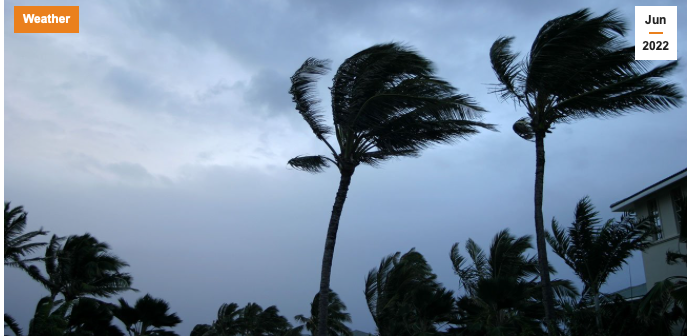Hurricane season is now well underway, and NOAA says it will be more active than normal. Here’s some great advice from America’s Boating Club (formerly the U.S. Power Squadrons) about how you can make your boat ready for the storm:
Hurricane preparation for boaters can help protect your boat during the predicted above-normal 2022 hurricane season.
If you live in a hurricane-susceptible area, you need to create a hurricane plan for your boat. First, ask your marina about its hurricane plan and what procedures are in place to handle major storms. This will help you formulate your own plan.
Given the severity and unpredictability of hurricanes, it’s best to act early, even before a hurricane watch is issued. The best hurricane plan is useless if you don’t have enough time to implement it. Remember, other boat owners will be securing their boats, too. Your hurricane hole may be full, your marina jammed, and access roads and bridges could close if you wait too long.
Regardless of where you decide to store your boat, you should take part in a few common preparation activities.
Reduce windage
High winds can hurl objects that normally appear secure. Strip all gear the wind can catch: canvas covers, sails, bimini tops, outriggers, antennas, anchors, running rigging, booms, life rings and dinghies. Anything on deck that can’t be removed should be lashed down securely. If you can, point your boat into the wind. If possible, remove sailboat masts. Run halyards to the masthead and secure them with a single line led away from the mast to the rail.
Chafe protection
Nylon line’s ability to stretch and absorb shock is important for in-water hurricane tie-up. However, this spring action causes nylon to abrade and heat up in contact with cleats, pilings, chocks and dock edges. Nylon strands break as they heat up, causing line failure. You can achieve chafe protection by some combination of increasing line diameter, covering lines, or using polyester tails on lines at tie points. Don’t seal the chafing protection. Let the rain or sea water cool the line.
Securing lines
Many boat cleats and chocks are inadequate and possibly unusable with additional, larger diameter storm lines. Add adequate cleats and chocks ahead of time. Make sure all cleats have stainless steel or aluminum backing plates so they can handle the load. Under most circumstances, use a maximum of two lines per cleat. Cleats are most reliable when lines are led parallel to the horn, distributing the force across the length of the cleat backing.
Water damage
If on land, remove drain plugs so any water that gets in can drain out. For boats in the water, seal all possible water entry points. Remove cowl ventilators and seal all vent openings. Use duct tape to cover instrument gauges and seal around hatches, ports and lockers to prevent water from entering. Close all but the cockpit-drain seacocks and plug the engine’s exhaust ports, usually one of the lowest openings on a boat. Check that your battery is fully charged, in good condition and topped up. Test the bilge pump and check the wiring to make sure it’s functioning properly. Read more:
https://boatingcompass.org/hurricane-preparation-for-boaters/?mc_cid=6c2ccbf251&mc_eid=17593ea63d




